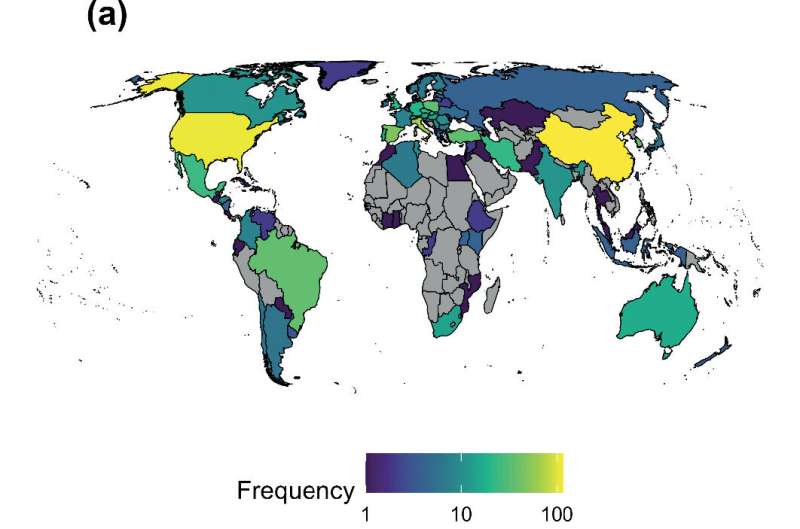This article has been reviewed according to Science X's editorial process and policies. Editors have highlighted the following attributes while ensuring the content's credibility:
fact-checked
peer-reviewed publication
trusted source
proofread
More and more emerging diseases threaten trees around the world

Diseases are among the major causes of tree mortality in both forests and urban areas. New diseases are continually being introduced, and pathogens are continually jumping to new hosts, threatening more and more tree species. When exposed to novel hosts, emerging diseases can cause mortality previously unseen in the native range.
Although not all diseases will outright kill their hosts, some can dramatically affect host populations. In the 20th century, chestnut blight, perhaps the most well-known tree disease in North America, effectively eliminated chestnut as an overstory tree in its native range in the Appalachian Mountains. More recently, we've seen sudden oak death in California, ash dieback in Europe, and butternut canker in the eastern US, each having the potential to eliminate host tree populations and alter the ecosystems where they occur.
"The continued emergence and accumulation of new diseases increases the likelihood of a particularly detrimental one emerging, and harming host tree populations," says Dr. Andrew Gougherty, research landscape ecologist at the USDA Forest Service. Recently, he has been exploring where tree diseases have accumulated fastest, and which trees are most impacted by new diseases. This information could help researchers and land managers better predict where new diseases may be most likely to emerge.
The study, recently published in NeoBiota, analyzes over 900 new disease reports on 284 tree species in 88 countries and quantified how emerging infectious diseases have accumulated geographically and on different hosts. "The 'big data' approach used in this study helps to characterize the growing threat posed by emergent infectious diseases and how this threat is unequally distributed regionally and by host species," the author writes.
Dr. Gougherty found that globally, the number of emerged diseases has accumulated rapidly over the past two decades. "The accumulation is apparent both where tree species are native and where they are not native, and the number of new disease emergences globally were found to double every ~11 years," he explains.
Among the trees he assessed, pines accumulated the most new diseases, followed by oaks and eucalypts. This, he explains, is likely due to their wide native distribution in the Northern Hemisphere, and the planting of pine forests throughout the globe. Europe, in aggregate, had the greatest total accumulation of new diseases, but North America and Asia were close behind.
In addition, he found more emerging tree diseases in areas where tree species were native versus non-native, with the exception of Latin America and the Caribbean, likely because most of the trees he assessed were not native to this region.
"Unfortunately, there is little evidence of saturation in emergent tree disease accumulation. Global trends show little sign of slowing, suggesting the impact of newly emerged diseases is likely to continue to compound and threaten tree populations globally and into the future," warns Dr. Gougherty. "Climate change is likely also playing a role, both by creating more favorable conditions for pathogens and by stressing host plants."
More information: Andrew V. Gougherty, Emerging tree diseases are accumulating rapidly in the native and non-native ranges of Holarctic trees, NeoBiota (2023). DOI: 10.3897/neobiota.87.103525
Journal information: NeoBiota
Provided by Pensoft Publishers




















